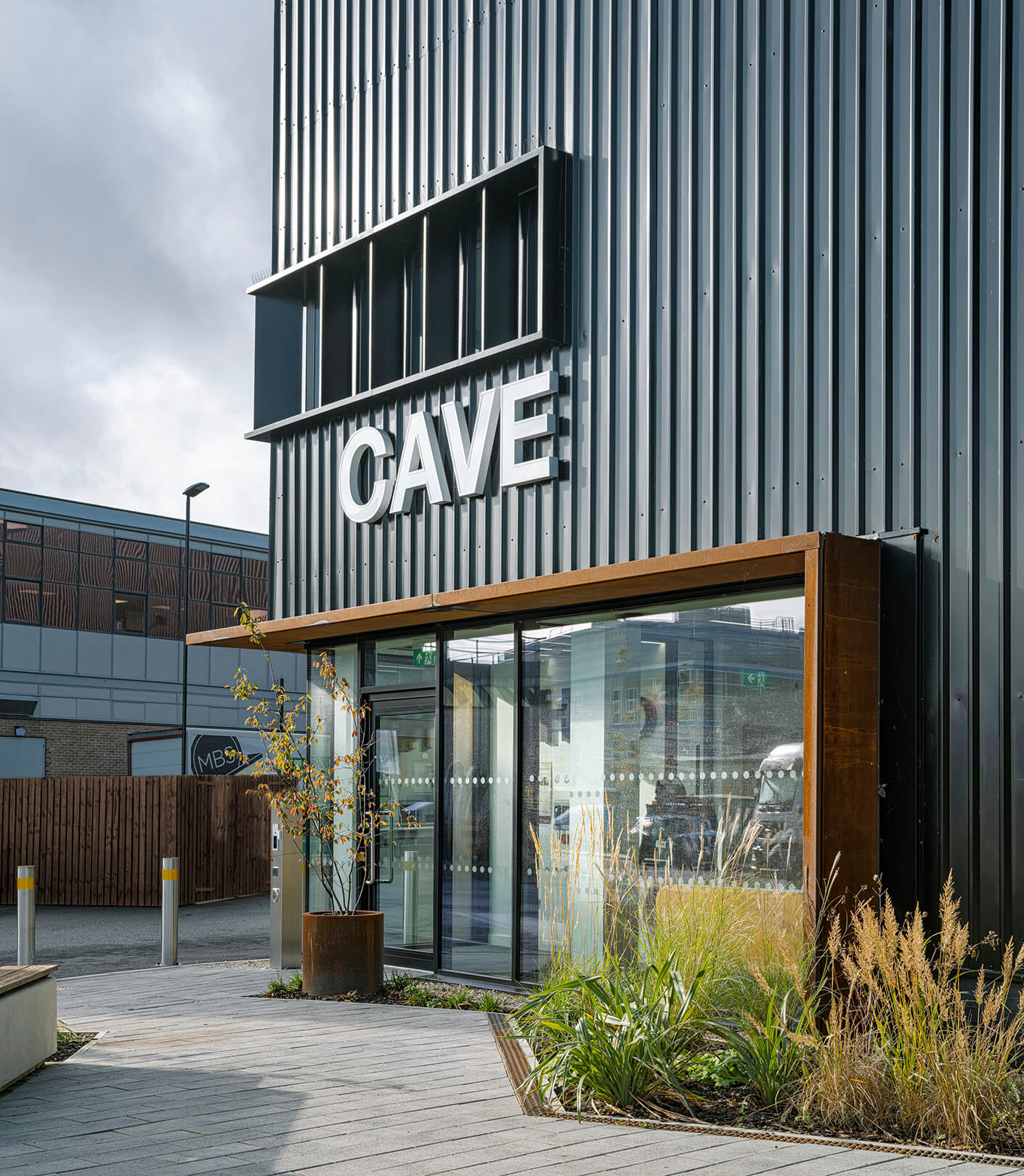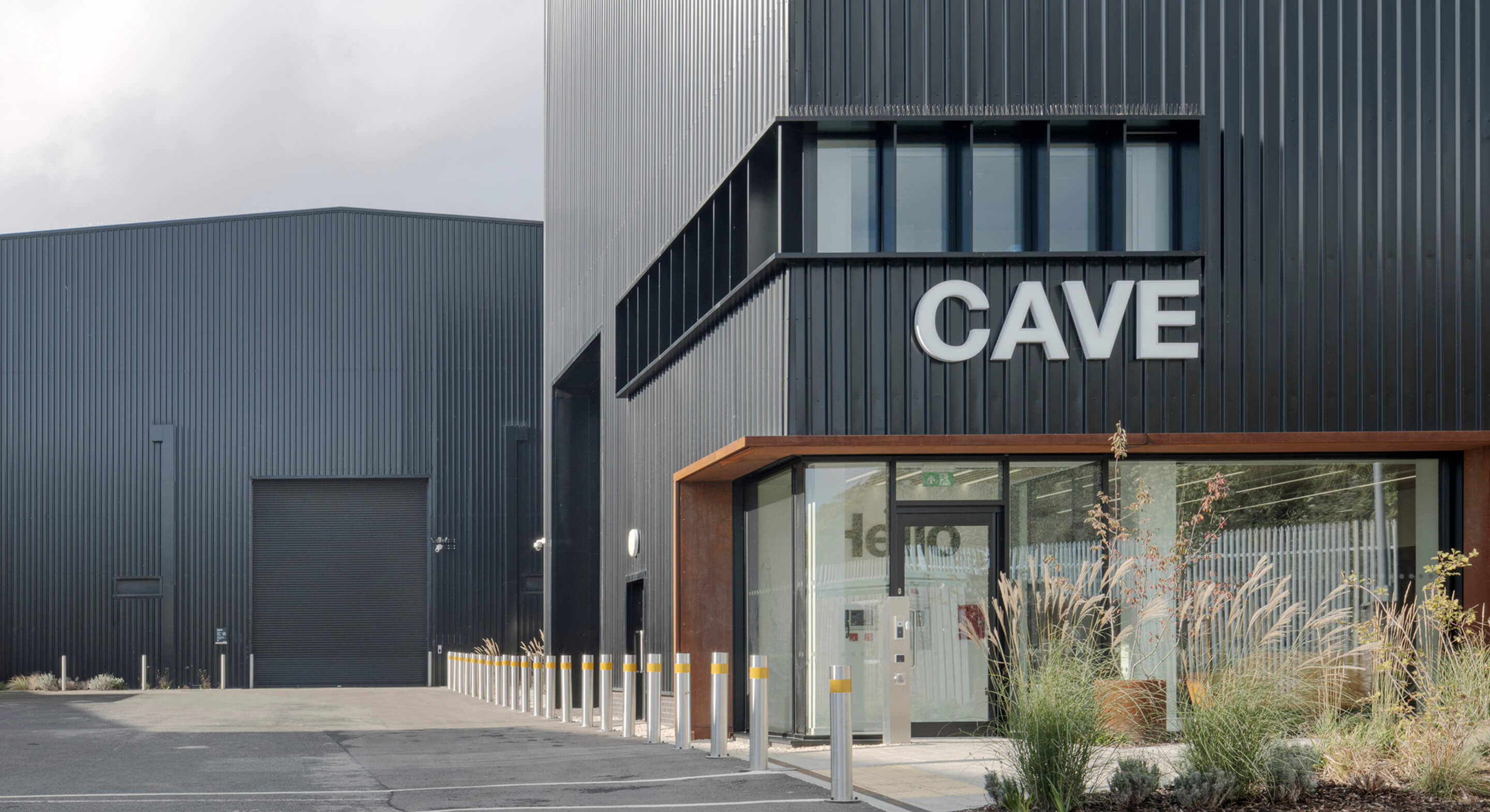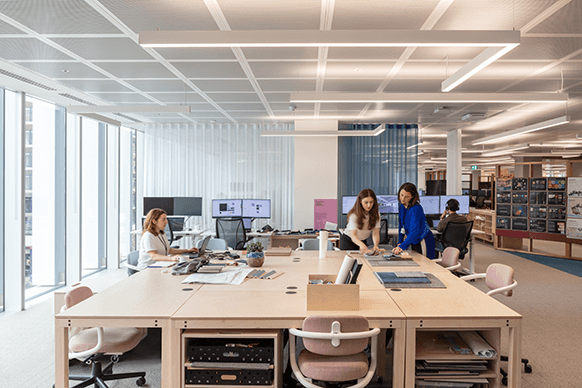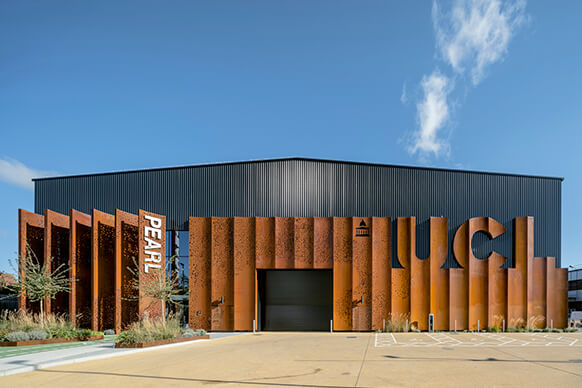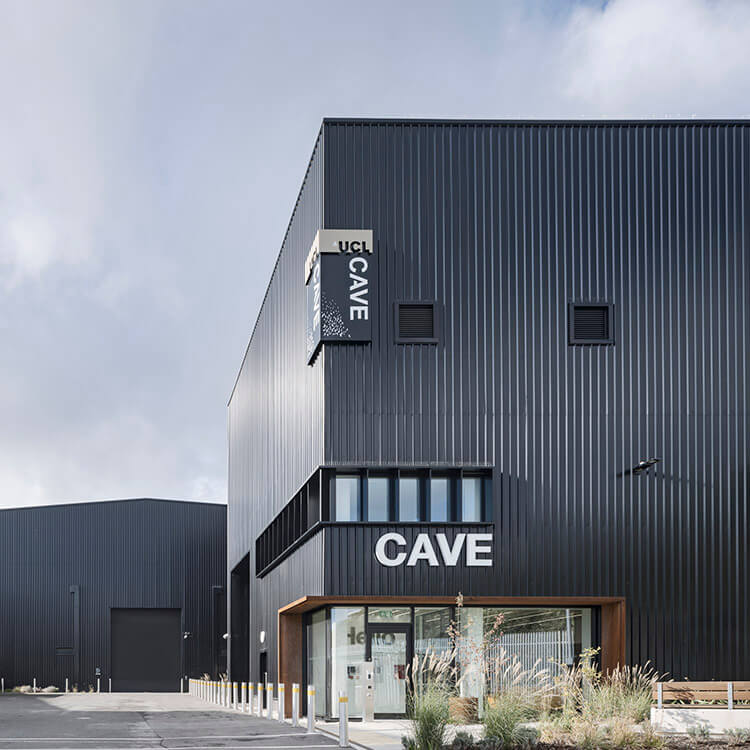
University College London, CAVE
CAVE, the Controlled Active Ventilation Environment, is University College London’s (UCL) large-scale air quality and ventilation laboratory for applied and fundamental science and engineering studies. This research facility has been designed to study how different types of ventilation systems affect how viruses spread in specific spacial configurations, with the goal to make indoor environments safer, healthier and more resilient.
CAVE is a complimentary building beside UCL’s award-winning research laboratory PEARL (Person Environment Activity Research Laboratory), and is part of the local wider regeneration plan.
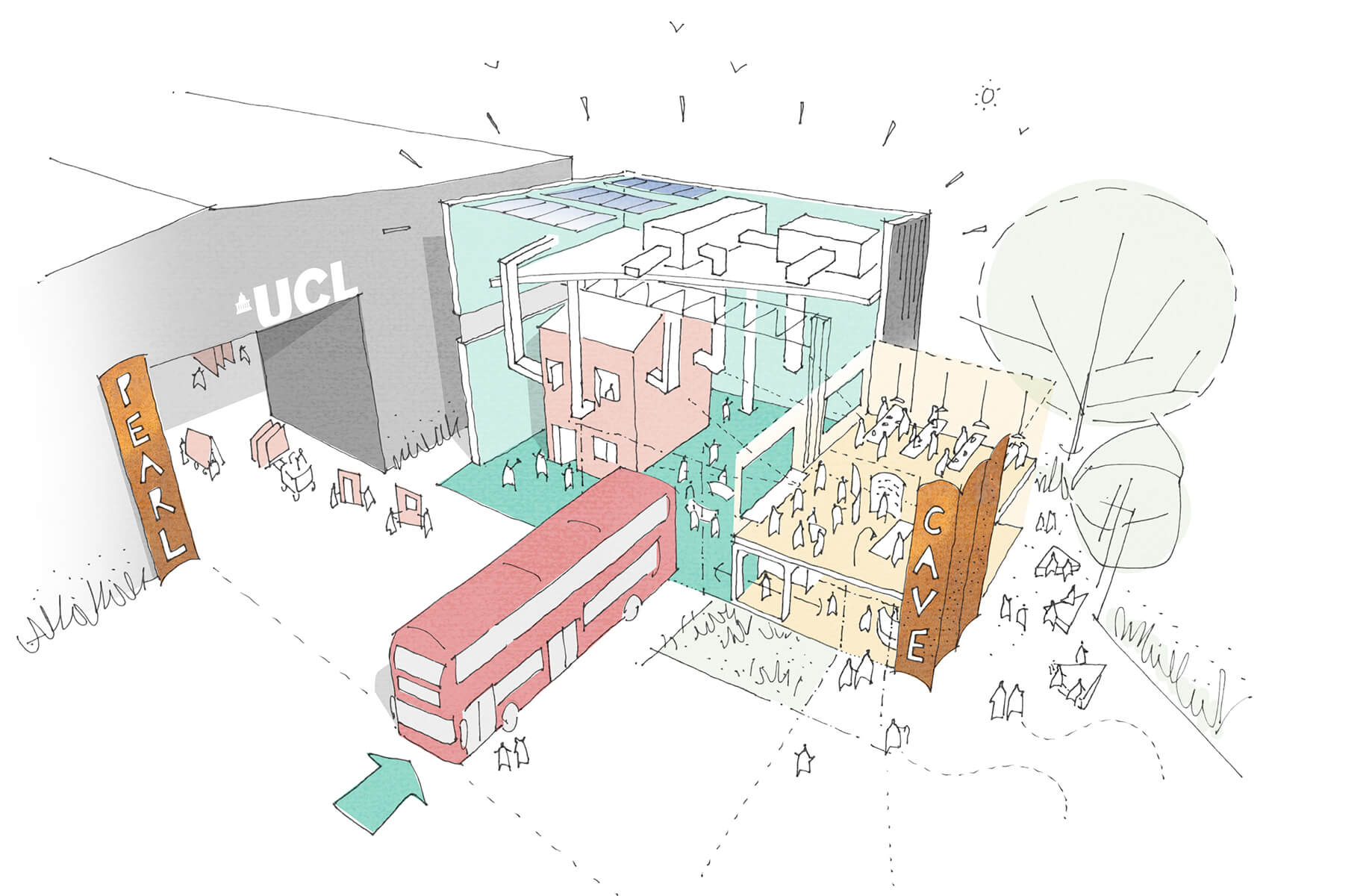
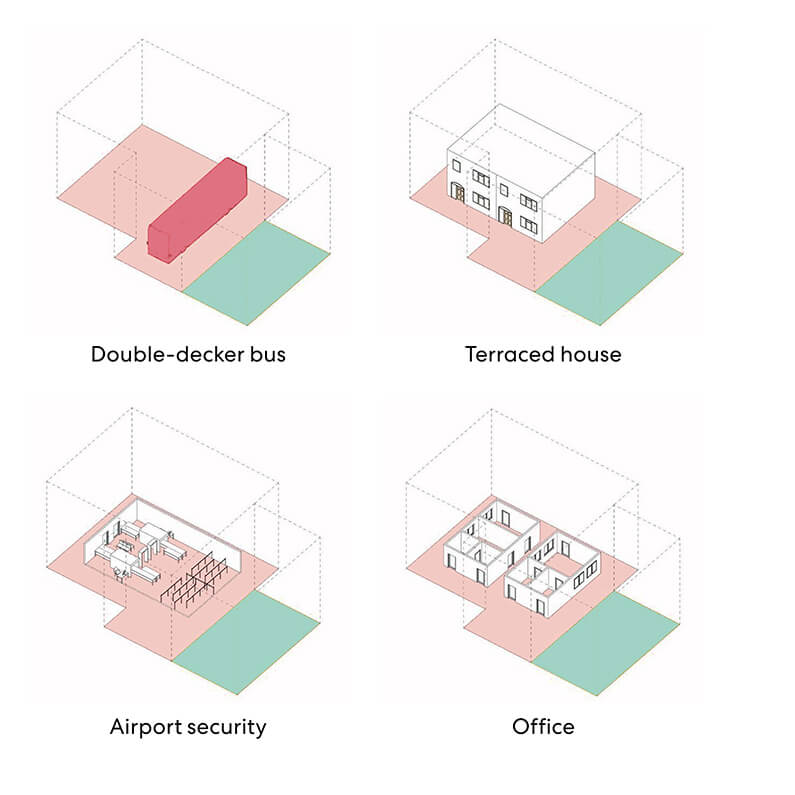
CAVE’s large laboratory space, approximately 16 metres wide by 16 metres deep and 10 metres high, is large enough for different environments to be temporarily built for specific experimental requirements. For example, researchers may build a series of small cellular office spaces, an airport lounge, or a three-storey house within this space.
A variety of ventilation systems can then be tested to see how air pumped in from different locations might affect how a virus travels. Natural ventilation can also be mimicked through openable windows within the temporary set-ups. Air within the laboratory itself can also be controlled to simulate the external environment. A surrogate virus, which will not pose a danger to health, will be used for the tests. It will move through the air and land on surfaces in the same way that typical airborne viruses do.
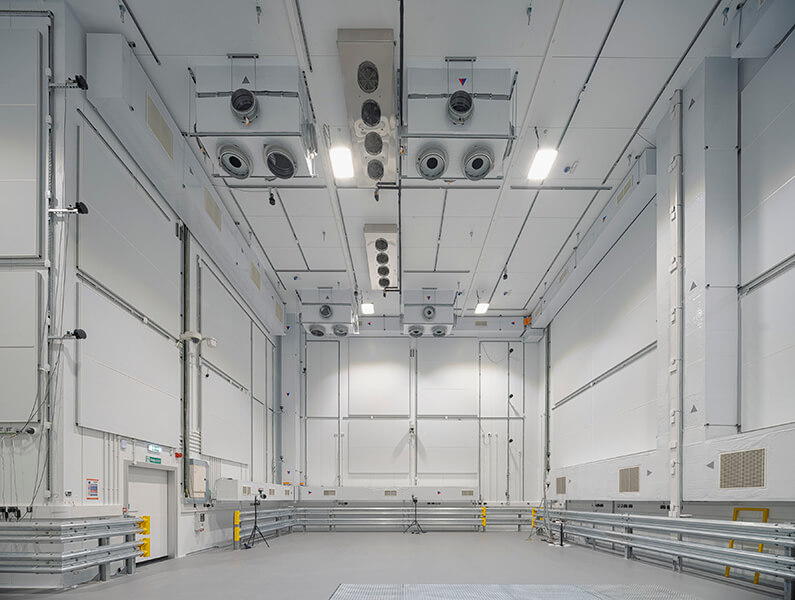
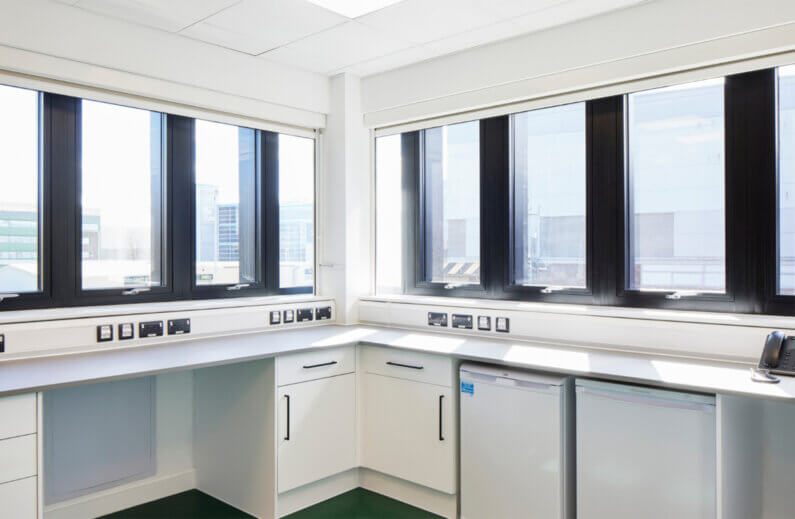
The size of the laboratory is determined by the simulated environments to be created. An airport lounge determines the minimum plan dimensions, a three-storey house the minimum height, and the need for a double decker bus to be driven into the lab determines the entrance size. A significant quantity of mechanical plant equipment is required to allow experiments to test how viruses work in different climatic conditions, and a series of ancillary spaces provide support.
CAVE has been designed with a highly efficient fabric as well as sophisticated heating, ventilation, and air-conditioning (HVAC) systems to enable the large-scale experiments of the lab. Its architecture is refined by careful, bespoke detailing to copings, corners and openings. Super-graphics and form are inspired by Lissitzky and Constructivist functionalism, while Corten steel references PEARL and the site’s industrial heritage.
